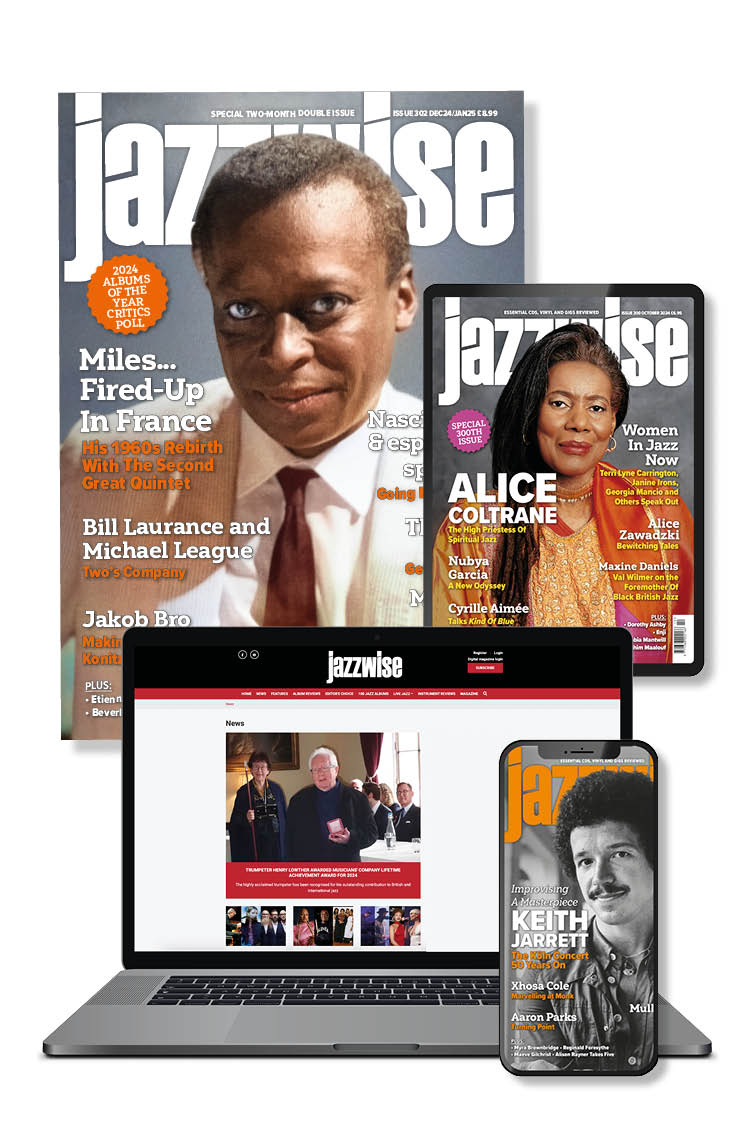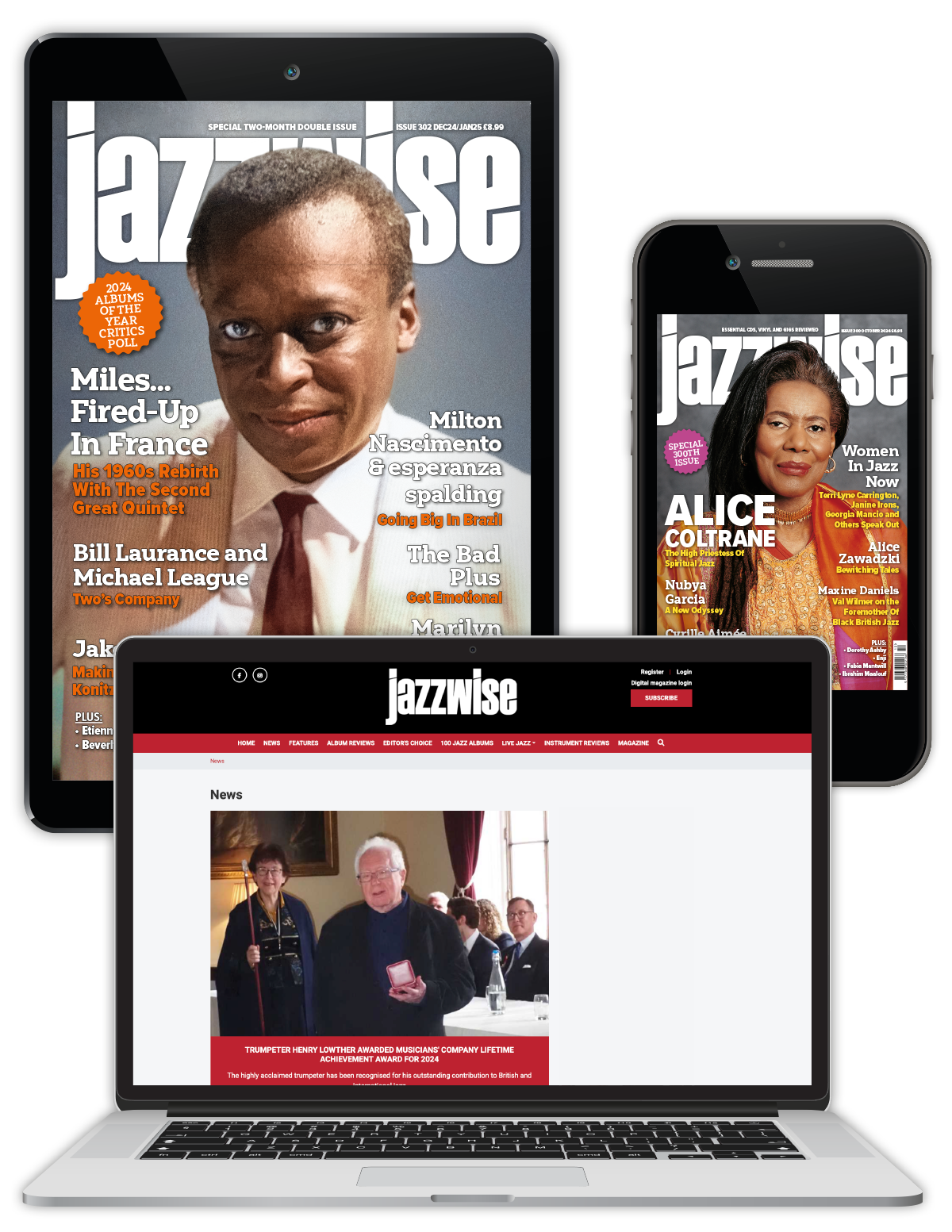Album Interview: Jamie Cullum: Interlude
Author: Peter Quinn
View record and artist detailsRecord and Artist Details
Musicians: |
Riaan Vosloo (b) |
Label: |
Island Records |
Magazine Review Date: |
November/2014 |
RecordDate: |
date not stated |
Following the vintage synths, stylistic mash-ups and perfect pop of Momentum, for his seventh studio album, Interlude, Jamie Cullum makes a decisive return to the jazz repertoire. Produced, engineered and mixed by Ben Lamdin (a.k.a. jazz producer Nostalgia 77), a collaboration that sprung out of an interview on Jamie's BBC Radio 2 show, the 12-track collection is rooted in the big band swing of the 1930s and 40s. There are fine, rollicking versions of Ray Charles's ‘Don't You Know’, the classic Cannonball Adderley/Jon Hendricks song, ‘Sack O’ Woe’, and a barnstorming ‘Lovesick Blues’. Perhaps ironically, two of the album's standout cuts are of non-jazz material: a haunting version of Sufjan Stevens' ‘The Seer's Tower’ which opens with the iciest of false harmonics in the strings, plus a stripped back trio version of Randy Newman's ‘Losing You’. Guest vocalists Gregory Porter and Laura Mvula join Cullum for duets on ‘Don't Let Me Be Misunderstood’ and ‘Good Morning Heartache’ respectively. They're both beautifully arranged, but neither song quite catches fire. The deluxe edition includes a DVD of Jamie's full performance at Jazz à Vienne.
Jazzwise spoke to Jamie Cullum about the album
What prompted the decision to revisit 1930s/40s style arrangements rather than going down a more contemporary sounding route?
I feel like that is an area I have explored a lot on my last two records, The Pursuit and Momentum. With Interlude it was a desire to focus on singing some beautiful songs and inhabiting the world of Nostalgia77 for a few days. I'm increasingly interested in a period of arranging from the 1930s and 40s where the arrangements were more orchestral, more talkative and generally a bit more knotty harmony-wise.
You've called the album your first proper jazz record. Could you elaborate on that?
It's probably an incorrect way to describe it, but I haven't made a record quite like this before. The closest I got was my very first record Heard It All Before. All in one room, single takes, rarely using headphones, really concentrating on the jazz and standards repertoire and giving more space for solos. It felt like an approach I hadn't visited for some time. Even on Pointless Nostalgic there was space for pop repertoire.
The duet with Gregory Porter is an interesting choice – why that particular song?
It's a song I've loved for many years. I've messed around with versions of it for a while. I finally hit upon the idea of it being a fight between two guys trying to convince a girl that he is the one for her. Gregory got his very first radio plays on my show and I was a real champion of his early on. I am really proud of that. In a lot of ways this album is partly a celebration of my radio show so it was essential to have Gregory as a part of it.
You had a large pool of tracks to choose from, recorded over just three days. Why this approach?
It was not intentionally fast or frantic, it was merely the fact that I was working with an established team. Benedic Lamdin is the quickest engineer I have ever worked with. You're up and running so quickly. We were very prepared with the arrangements and intentionally wanted to use the early takes that were full of life and excitement.
The classic recording of ‘Make Someone Happy’, with which the album signs off, is the Bill Evans/Tony Bennett version. Where does that album rank in your jazz pantheon?
The Evans/Bennett album is one of my absolute favourites. It contains Tony's best singing and also some of Bill's best playing, in my opinion. The intimacy of it sounds startlingly modern, even today.

Jazzwise Full Club
- Latest print and digital issues
- Digital archive since 1997
- Download tracks from bonus compilation albums throughout the year
- Reviews Database access
From £9.08 / month
Subscribe
Jazzwise Digital Club
- Latest digital issues
- Digital archive since 1997
- Download tracks from bonus compilation albums during the year
- Reviews Database access

